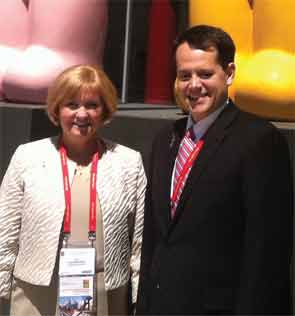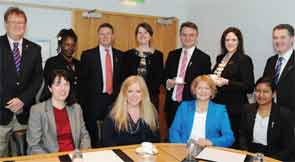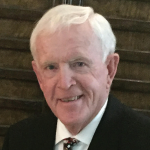
European League Against Rheumatism (EULAR)
Our history of collaboration with EULAR has been very fruitful. We began our partnership in 2006 with the joint development of criteria for rheumatic disease. Since that date, the EULAR Standing Committee for Clinical Affairs and the ACR Quality of Care Committee have published several joint papers: “Points to consider for reporting disease activity in rheumatoid arthritis clinical trials,” “Rheumatoid arthritis classification criteria,” “Rheumatoid arthritis remission criteria,” and “Polymyalgia rheumatica classification criteria.” In October, new ACR-EULAR Scleroderma Classification Criteria will be jointly published in Arthritis & Rheumatism and Annals of the Rheumatic Diseases.
Currently, the ACR and EULAR are jointly supporting projects to develop myositis classification criteria, myositis response criteria, vasculitis classification criteria, and gout classification criteria. We are also pleased to report that joint support of an ongoing pediatric macrophage activation syndrome classification criteria project began in July.
Since 2006, ARHP collaboration with EULAR’s Health Professionals in Rheumatology has included development of ACR/ARHP Annual Meeting joint sessions for health professionals and an educational article exchange. For the future, the two groups are partnering on a consensus document that focuses on the scope of practice of the rheumatology team and nonpharmacologic interventions for pain management in patients with rheumatic diseases and musculoskeletal conditions.

African League of Associations for Rheumatology (AFLAR)
In April, the ARHP was asked to participate in the 7th Congress of AFLAR and the 23rd Congress of the South African Rheumatism and Arthritis Association. ARHP’s immediate Past President, Benjamin J. Smith, PA-C, attended and presented three sessions: “The role of the nurse practitioner and physician assistants in rheumatology practice”; “Training and using physician assistants and nurse practitioners effectively in a rheumatology practice”; and “Why do my joints hurt?: Using case studies to review OA and RA diagnostic and treatment guidelines.” Attendee response was very positive, as the rheumatology community in Africa is considering methods to enhance their workforce, including investigating how to more fully utilize health professionals in caring for those with rheumatic diseases. In addition to his presentations, Smith shared information on the Advanced Rheumatology Course and Fundamentals of Rheumatology Course developed by the ARHP. We hope that these online educational opportunities for rheumatology health professionals will provide key support in developing the workforce on the African continent.
